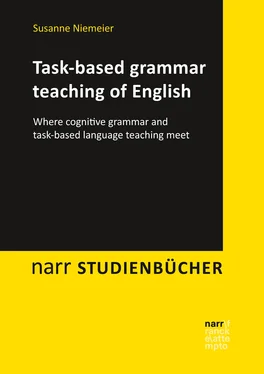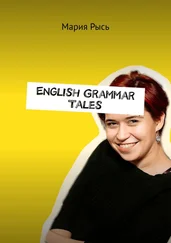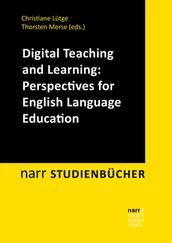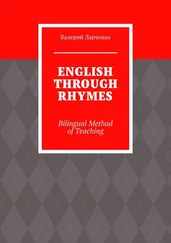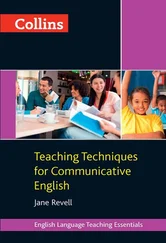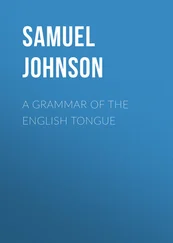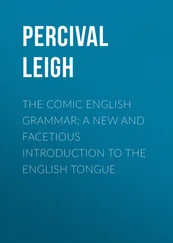EL-BOUZ (2016) reports on a related experiment, this time for German as a foreign language. She not only relied on cognitive-linguistic explanations, but additionally used animations. Her 118 participants were divided into four groups, the first group receiving cognitive-linguistic explanations with animations, the second group receiving cognitive-linguistic explanations with static pictures, the third group receiving traditional explanations and animations, and finally the fourth group receiving traditional explanations along with static pictures. Both cognitive groups significantly outperformed the traditional groups, with the cognitive/animations group being somewhat ahead of the cognitive/static pictures group.
CSÁBI (2004) tested a cognitively enhanced teaching procedure for the polysemous verbs ‘keep’ and ‘hold’, using elements of metaphor theory. Her test subjects were Hungarian learners of English in a secondary school. The test group was shown and explained the radial semantic networks around the prototypical and less prototypical meanings of the verbs in question, whereas the control group just received Hungarian translations. The immediate post-test showed significantly better results for the cognitive group, however, in the delayed post-test this significance had disappeared. CSÁBI’s experiment was replicated by BERÉNDI/CSÁBI/KÖVECSES (2008), again with two groups and a pre- as well as two post-tests. In comparison to the first experiment, the instructional treatment was more extensive. The cognitive group received visual support which illustrated the prototypical meanings of the verbs in question, and the explanations informed by metaphor theory were expanded. The cognitive group showed significantly better results both in the immediate post-test as well as in the delayed post-test, which took place five months later.
A somewhat similar experiment was conducted by LINDSTROMBERG/BOERS (2005), who tested the acquisition of English verbs relating to manner of motion, such as ‘to trudge’ and ‘to saunter’. The cognitive group was allowed to enact the movements (in the sense of embodiment), whereas the control group just received verbal explanations. The cognitive group outperformed the control group on the retention of the targeted verbs, and the difference in performance was statistically significant. A similar bodily-based teaching procedure has been described by HOLME, who integrated cognitive grammar elements into the Total Physical Response method by focusing on embodied demonstrations of word stress and intonation patterns, claiming that “activities that link movement, stress and rhythm also link language, as a remembered entity, to the use of the body as semiotic device” (HOLME 2009: 44). However, these teaching suggestions were not empirically tested. Furthermore, it is somewhat difficult to imagine how movement and gesture can help to explain more complex grammatical areas such as, for example, tense, aspect or voice.
VERSPOOR/HUONG (2008) tested the effect of cognitive grammar explanations for the acquisition of English definite and indefinite articles with Vietnamese students, a topic which is of special relevance for Vietnamese learners of English because Vietnamese is a language without articles. The researchers used a ‘decision tree’ as a visual help for the learners to decide which article to use. Once again, the cognitive group significantly outperformed the traditional group in the immediate post-test, however, the statistical significance was no longer given in the delayed post-test. KRÓL-MARKEFKA (2010) also focused on the teaching of English articles to speakers of a language which does not have articles, in her case Polish learners of English, and found that the cognitive grammar approach worked better than the traditional approach. Whereas the test results immediately after the teaching intervention were comparable for both groups, only the cognitive grammar-instructed group had retained these results in the delayed post-test.
BIELAK/PAWLAK/MYSTKOWSKA-WIERTELAK (2013) conducted a four-week empirical study targeted at teaching the English active and passive voices to Polish learners of English in a classroom setting, focusing on cognitive grammar for one group and traditional, structuralist instruction for another group. They found statistically significant but comparable gains in knowledge in both groups and could not prove any superiority of the cognitive group. In their conclusion, they state that cognitively oriented teaching approaches are equally effective as standard ones and they blame the non-superiority of the cognitive approach on the fact that the (advanced) learners in their experiment had been trained on traditional grammar explanations for a number of years and may have found it difficult to see grammar from a new perspective. The authors claim that “the effectiveness of CG-based rules might benefit from their more widespread use in language pedagogy” (ibid.: 607), although it is doubtful that cognitive grammarians would accept the expression ‘rules’.
ROCHE/SUÑER (2016: 105) mention a forthcoming study by SUÑER/ARNETT3, which focuses on the passive construction for learners of German as a foreign language. They conducted a small-scale intervention study, in which they could show that the cognitive treatment, together with animations, led to better results than the standard treatment, especially concerning the semantic aspects of the active and passive voices.
Some few studies focus on the teaching of tense and aspect in English, as usually these two areas go hand in hand. Tense and aspect are two of the most error-prone areas of English for German learners. One study (TIAN 2015) reports on an experiment which only dealt with tense, namely the teaching of the English simple present to Chinese learners of English. The study found out that the learners who were taught with a cognitive-grammatical approach did not perform significantly better than those learners who were taught with a traditional approach, although “the CG approach did improve the students’ performance considerably” (ibid.: 24). Also in this case, the author argues that possibly the CG treatment and the accompanying new terminology may have been too abstract for the learners. This argument makes sense, especially when taking into account that in this study the CG approach was not didactically reduced for the learners’ sake. Similar results, namely that the cognitive treatment did not result in more gains for the learners than the traditional treatment were found by three further studies4, all of them focusing on both tense and aspect. All three studies claim that to a certain extent the obtained result is at least partly due to the learners’ lack of familiarity with the cognitive approach.
The final area to be briefly considered relates to the teaching of English conditionals. JACOBSEN (2016) reports on a three-week teaching intervention with advanced ESL learners, which included three different learner groups, one taught with the traditional approach to grammar, one taught with a task-based approach, and the third one taught with a combination of cognitive grammar principles and the task-based approach. This study is the only currently available one which combines cognitive grammar principles with the task-based approach. The results of this experiment demonstrate that it was the combination of cognitive grammar and the task-based approach which proved most fruitful in terms of the learners’ gains, significantly more so than task-based instruction on its own, which – in turn – worked better than the traditional approach.
Although most of the studies cited do show a clear improvement on the side of the learners when cognitive-linguistic approaches were used in the teaching of grammar phenomena, not all studies managed to prove this effect. This can be due to a variety of reasons, among them the learners’ utter unfamiliarity with this approach, their being accustomed to a very different type of grammar teaching, their dormant theories about grammar teaching, the brevity of time used for the cognitive instructional interventions and sometimes also weaknesses in the study set-ups and tests or a flawed methodology. What none of the studies has shown, however, is that the cognitive treatment failed or was worse than the traditional treatment, as it produced results which were at least as good as those achieved through traditional instruction, and in many of the cases its results were clearly superior to those gained by the traditional approach. However, only one of the studies (JACOBSEN 2016) embedded the grammatical instruction into a task-based setting, a method which proved effective. It can be assumed that in the future more empirical studies working with a cognitive grammar framework and at the same time using a task-based approach will be published. As long as this is not the case, one can only assume that this way of teaching works5.
Читать дальше
